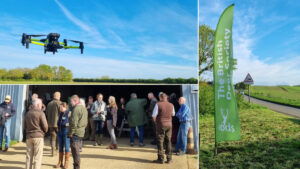ABOUT THE STUDY
Lyme borreliosis (LB) is tick-borne and can cause serious disease with the UK annual diagnoses trebling over the last two decades (Marcu et 01., 2013; Dillon et 01.,2010). Those working in farmland/forestry or having contact with animals (including deer) in high hazard areas are at greatest risk (HSE, 2010).
Deer have key roles in most, but not all, UK LB disease systems (Medlock et 01.,2013; Gilbert et 01.,2012; Ogden et 01., 1997). However they are non-competent hosts for the pathogen itself, and small mammals or birds are usually required as disease reservoirs (Franke et al.,2013). Greater knowledge of these disease systems and their habitat determinants would be valuable, not least as interventions based on simplistic models that blame LB primarily on deer may undermine broader attempts to enhance public and ecosystem health, or even increase local LB hazard (Dobson, 2014; Li et 01.,2014; Ostfeld, 2011).
The aim of this research is to build an evidence based picture of the ecological determinants of Lyme borreliosis risk in the South Downs National Park (SDNP) and to suggest potential one-health based interventions.
The study will map LB vector and pathogen distribution across the SDNP. If Borrelia miyamotoi is detected it will examine the potential dilution effect of deer on this emerging disease hazard. It will determine host community composition for LB pathogens and their vectors. It will review one-health interventions to decrease LB risk and suggest actions within the SDNP and where reasonable more generally.
The study will provide a mapped assessment of LB risk and causal factors and support development of policies that avoid or minimise conflicts between public and ecosystem health (Medlock and Jameson,2010). Given LBs widespread distribution, knowledge of its ecological determinants in the SDNP will be of value beyond the Park.
FURTHER READING

BDS Launches First Drone Survey Thanks to Supportive Members
We are thrilled to announce a groundbreaking moment for the BDS community: the successful launch of our first drone survey funded by last year’s award-winning Big Give campaign. This achievement has been made possible through the unwavering support and contributions of our dedicated members and supporters.

Responsible Deer Management Clear Up
This article stresses responsible deer management, especially in disposing of deer carcasses after incidents like Deer Vehicle Collisions (DVCs) and humane dispatch. It highlights the need to ensure public safety and sensitivity by properly handling carcasses and following best practices.

Ask BDS: Does the BDS Investigate Wildlife Crimes?
Discover how the British Deer Society addresses wildlife crimes, offering guidance to concerned individuals and collaborating with authorities. Explore their role, limitations, and the importance of collective action in protecting our wild deer.










